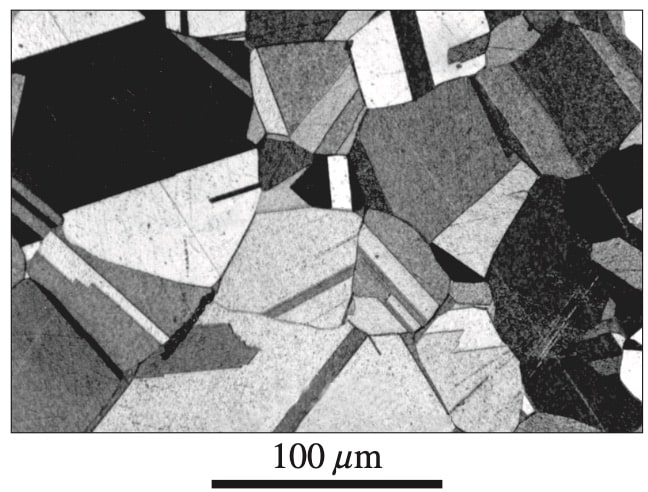The image shows the microstructure of brass.

What type of grain structure does this image represent?
- Deformed
- Dendritic
- Equiaxed
- Stressed
Aussie Maths & Science Teachers: Save your time with SmarterEd
The image shows the microstructure of brass.

What type of grain structure does this image represent?
`C`
`=>C`
Structural steel `text{I}`-beams are used to make a crane were hot-rolled then normalised.
Explain why normalising was chosen as the heat treatment process. Support your answer with a labelled sketch of the resulting microstructure. (4 marks)
--- 8 WORK AREA LINES (style=lined) ---
--- 0 WORK AREA LINES (style=lined) ---
A small truck chassis rail has been made from rectangular hollow section (RHS) steel. The RHS has been cold formed from an alloy steel with a yield strength of 500 MPa. A manufacturer's sign on the chassis rail is shown below.
--- 6 WORK AREA LINES (style=lined) ---
--- 5 WORK AREA LINES (style=lined) ---
i. Welding
Drilling
i. Welding
Drilling
Normalised high-tensile steel has been chosen for the manufacture of a wing support beam.
--- 0 WORK AREA LINES (style=lined) ---
--- 4 WORK AREA LINES (style=lined) ---
i. Microstructures
ii. The strength of the steel is markedly increased.
i. Microstructures
ii. The strength of the steel is markedly increased.
Steel `text{I}`-beams have been used when large, open spans need to be created inside buildings.
Explain how microstructural changes take place in steel when an `text{I}`-beam is formed using the process of hot rolling. You may use a drawing to support your answer. (4 marks)
--- 9 WORK AREA LINES (style=lined) ---
The grain structure of a material has changed over time from that shown in microstructure `A` to that shown in microstructure `B`.
What heat treatment process has the material undergone to cause this change?
`D`
`=>D`